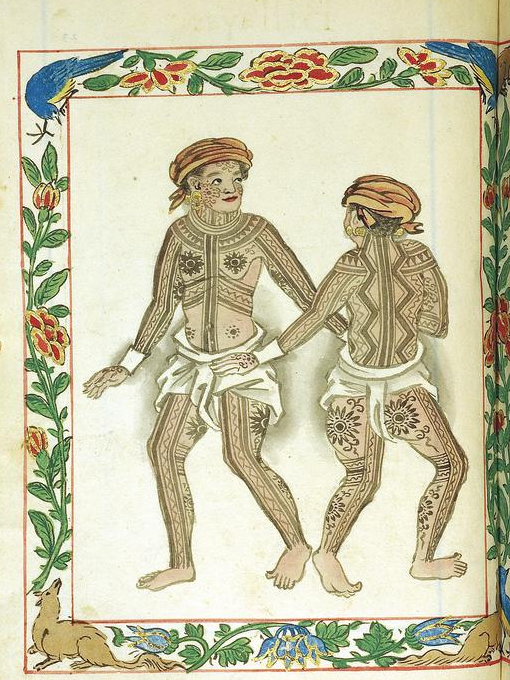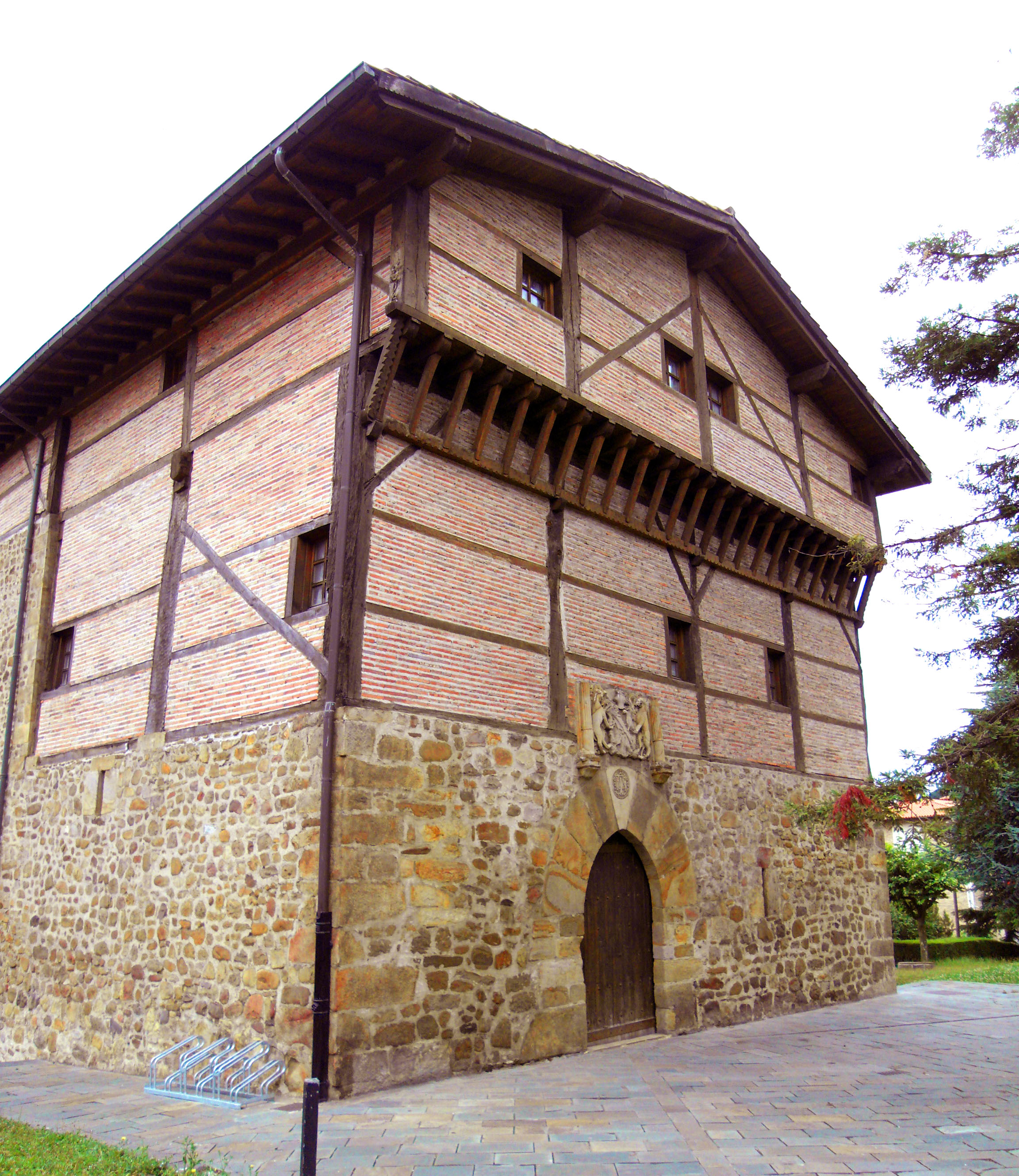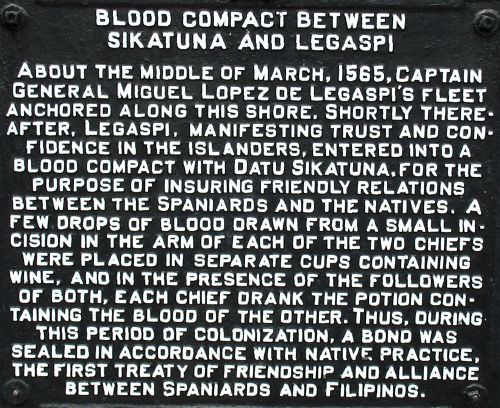|
Sandugo Festival
The Sandugo Festival is an annual historical celebration that takes place every year in Tagbilaran City on the island of Bohol in the Philippines. This festival commemorates the Treaty of Friendship between Datu Sikatuna, a chieftain in Bohol, and Spanish conquistador Miguel López de Legazpi. This 16th-century peace treaty occurred on March 16, 1565 through a blood compact or "sandugo".History of Bohol www.bohol.gov.ph Retrieved 16 November 2006 www.philippinecountry.com Retrieved 16 November 2006 The Sandugo Festival is held every July. The Tagbilaran City Charter Day on July 1 kicks-off the month-long festival with a holy mass, diana, motorcade and program sponsored by the City Gove ... [...More Info...] [...Related Items...] OR: [Wikipedia] [Google] [Baidu] |
Sandugo Reenactment
The Sandugo was a blood compact, performed in the island of Bohol in the Philippines, between the Spanish explorer Miguel López de Legazpi and Datu Sikatuna the chieftain of Bohol on March 16, 1565, to seal their friendship as part of the tribal tradition. This is considered as the first treaty of friendship between the Spaniards and Filipinos. "''Sandugo''" is a Visayan word which means "one blood". The ''Sandugo'' is depicted in both the provincial flag and the official seal of the government in Bohol. It also features the image of the blood compact. The top of the seal explains the history behind the ''Sandugo'' event that occurred in Bohol, the fleet and the location where the Spaniards anchored and the place where the treaty was conducted which was dated on March 16, 1565. History In 1521, navigator Ferdinand Magellan arriving on a Spanish expedition to the Moluccas became the first person from Europe to reach Asia by sailing west, a voyage of which he would meet an unt ... [...More Info...] [...Related Items...] OR: [Wikipedia] [Google] [Baidu] |
Tagbilaran City
Tagbilaran, officially the City of Tagbilaran ( ceb, Dakbayan sa Tagbilaran), is a 3rd class component city and capital of the province of Bohol, Philippines. According to the 2020 census, it has a population of 104,976 people. Encompassing a land area of , with a coastline of on the southwestern part of the island, the city shares its boundaries with the towns of Cortes, Corella, and Baclayon. Tagbilaran is the principal gateway to Bohol, southeast of the national capital of Manila and south of the regional capital, Cebu City. Etymology According to oral tradition, the name is a Hispanicized form of "''Tagubilaan''", a compound of ''tagu'', meaning "''to hide''" and "''Bilaan''", referring to the Blaan people, who were said to have raided the Visayan Islands. This explanation seems to correlate with the government's explanation. According to the official government website of Tagbilaran, it is said to have been derived from ''tinabilan'' meaning ''shielded'', as the to ... [...More Info...] [...Related Items...] OR: [Wikipedia] [Google] [Baidu] |
Bohol
Bohol (), officially the Province of Bohol ( ceb, Lalawigan sa Bohol; tl, Lalawigan ng Bohol), is an island province of the Philippines located in the Central Visayas region, consisting of the island itself and 75 minor surrounding islands. Its capital is Tagbilaran. With a land area of and a coastline long, Bohol is the tenth largest island of the Philippines.The Island-Province of Bohol Retrieved November 15, 2006. The province of Bohol is a first-class province divided into 3 congressional districts, comprising 1 component city and 47 |
Philippines
The Philippines (; fil, Pilipinas, links=no), officially the Republic of the Philippines ( fil, Republika ng Pilipinas, links=no), * bik, Republika kan Filipinas * ceb, Republika sa Pilipinas * cbk, República de Filipinas * hil, Republika sang Filipinas * ibg, Republika nat Filipinas * ilo, Republika ti Filipinas * ivv, Republika nu Filipinas * pam, Republika ning Filipinas * krj, Republika kang Pilipinas * mdh, Republika nu Pilipinas * mrw, Republika a Pilipinas * pag, Republika na Filipinas * xsb, Republika nin Pilipinas * sgd, Republika nan Pilipinas * tgl, Republika ng Pilipinas * tsg, Republika sin Pilipinas * war, Republika han Pilipinas * yka, Republika si Pilipinas In the recognized optional languages of the Philippines: * es, República de las Filipinas * ar, جمهورية الفلبين, Jumhūriyyat al-Filibbīn is an archipelagic state, archipelagic country in Southeast Asia. It is situated in the western Pacific Ocean and consists of aro ... [...More Info...] [...Related Items...] OR: [Wikipedia] [Google] [Baidu] |
Datu Sikatuna
Datu Sikatuna (or ''Catunao'') was a Datu or chieftain of the Bool Kingdom (or Kedatuan of Dapitan) in the island of Bohol in the Philippines. He made a blood compact ('' sanduguan'') and alliance with the Spanish explorer Miguel López de Legazpi on March 25, 1565 at Hinawanan Bay, barangay Hinawanan, Loay. Their blood compact is the first Treaty of Friendship between Spain and the Philippines. The previous site of the pact was at barangay Bool, Tagbilaran City but later concluded the event actually happened at barangay Hinawanan, Loay, Bohol through Resolution No. 4, issued by the National Historical Institute in 2005. Bool Kingdom Brothers — Datu Pagbuaya and Datu Dailisan, who were the known rulers of Kedatuan of Dapitan (Bool Kingdom) before the arrival the Spaniards. The vast kingdom has control over the present-day Bohol, Siquijor, Tanjay, Northern Mindanao from Zamboanga to Surigao; Southern Leyte, and Eastern Mindanao up to Davao Oriental, with its capital at ... [...More Info...] [...Related Items...] OR: [Wikipedia] [Google] [Baidu] |
Spain
, image_flag = Bandera de España.svg , image_coat = Escudo de España (mazonado).svg , national_motto = '' Plus ultra'' ( Latin)(English: "Further Beyond") , national_anthem = (English: "Royal March") , image_map = , map_caption = , image_map2 = , capital = Madrid , coordinates = , largest_city = Madrid , languages_type = Official language , languages = Spanish , ethnic_groups = , ethnic_groups_year = , ethnic_groups_ref = , religion = , religion_ref = , religion_year = 2020 , demonym = , government_type = Unitary parliamentary constitutional monarchy , leader_title1 = Monarch , leader_name1 = Felipe VI , leader_title2 = Prime Minister , leader_name2 = Pedro Sánchez , legislature = ... [...More Info...] [...Related Items...] OR: [Wikipedia] [Google] [Baidu] |
Miguel López De Legazpi
Miguel López de Legazpi (12 June 1502 – 20 August 1572), also known as ''Adelantado, El Adelantado'' and ''El Viejo'' (The Elder), was a Spaniard who, from the age of 26, lived and built a career in Mexico (then the Viceroyalty of New Spain) and, in his 60s, financed and led a colonizing expedition from Mexico to the Philippines, Philippine islands. He was joined by his Mexican grandsons, Juan de Salcedo and his brother Felipe de Salcedo, Felipe, on the expedition. Legazpi established the first Spanish settlement in the East Indies when his expedition crossed the Pacific Ocean from the New Spain, arriving in Cebu in the modern Philippine Islands in 1565. He was the first Governor-General of the Philippines, Governor-General of the Spanish East Indies, which was administered from Mexico City for the Spanish crown. It also encompassed other Pacific islands, namely Guam, the Mariana Islands, Marianas Islands, Palau, and the Caroline Islands, Carolinas. After obtaining peace w ... [...More Info...] [...Related Items...] OR: [Wikipedia] [Google] [Baidu] |
Blood Compact
Blood compact (Spanish: ''Pacto de sangre''; Filipino: ''Sanduguan'') was an ancient ritual in the Philippines intended to seal a friendship or treaty, or to validate an agreement. The contracting parties would cut their hands and pour their blood into a cup filled with liquid, such as wine, and drink the mixture. A famous example of the blood compact was the 1565 '' Sandugo'' between Spanish explorer Miguel López de Legazpi and Datu Sikatuna, the chieftain of Bohol. An earlier blood compact, the first between natives and Europeans took place in 1521 between navigator Ferdinand Magellan and Rajah Humabon of Cebu. Another type of blood compact was also described by Antonio Pigafetta during their stopover in Palawan (after the death of Magellan). It was made between the crew of the expedition and a ''datu'' of Palawan as a symbol of peaceful intentions. The ''datu'' made a small cut on his chest using a knife borrowed from the expedition. The ''datu'' then dipped a finger on the b ... [...More Info...] [...Related Items...] OR: [Wikipedia] [Google] [Baidu] |
Sandugo
The Sandugo was a blood compact, performed in the island of Bohol in the Philippines, between the Spanish explorer Miguel López de Legazpi and Datu Sikatuna the chieftain of Bohol on March 16, 1565, to seal their friendship as part of the tribal tradition. This is considered as the first treaty of friendship between the Spaniards and Filipinos. "''Sandugo''" is a Visayan word which means "one blood". The ''Sandugo'' is depicted in both the provincial flag and the official seal of the government in Bohol. It also features the image of the blood compact. The top of the seal explains the history behind the ''Sandugo'' event that occurred in Bohol, the fleet and the location where the Spaniards anchored and the place where the treaty was conducted which was dated on March 16, 1565. History In 1521, navigator Ferdinand Magellan arriving on a Spanish expedition to the Moluccas became the first person from Europe to reach Asia by sailing west, a voyage of which he would meet an un ... [...More Info...] [...Related Items...] OR: [Wikipedia] [Google] [Baidu] |
Miss Bohol Sandugo Beauty Pageant
Miss (pronounced ) is an English language honorific typically used for a girl, for an unmarried woman (when not using another title such as "Doctor" or " Dame"), or for a married woman retaining her maiden name. Originating in the 17th century, it is a contraction of ''mistress''. Its counterparts are Mrs., used for a married women who has taken her husband's name, and Ms., which can be used for married or unmarried women. The plural ''Misses'' may be used, such as in ''The Misses Doe''. The traditional French "Mademoiselle" (abbreviation "Mlle") may also be used as the plural in English language conversation or correspondence. In Australian, British, and Irish schools the term 'miss' is often used by pupils in addressing any female teacher. Use alone as a form of address ''Miss'' is an honorific for addressing a woman who is not married, and is known by her maiden name. It is a shortened form of ''mistress'', and departed from ''misses/missus'' which became used to signify mar ... [...More Info...] [...Related Items...] OR: [Wikipedia] [Google] [Baidu] |
Sandugo Streetdancing
The Sandugo was a blood compact, performed in the island of Bohol in the Philippines, between the Spanish explorer Miguel López de Legazpi and Datu Sikatuna the chieftain of Bohol on March 16, 1565, to seal their friendship as part of the tribal tradition. This is considered as the first treaty of friendship between the Spaniards and Filipinos. "''Sandugo''" is a Visayan word which means "one blood". The ''Sandugo'' is depicted in both the provincial flag and the official seal of the government in Bohol. It also features the image of the blood compact. The top of the seal explains the history behind the ''Sandugo'' event that occurred in Bohol, the fleet and the location where the Spaniards anchored and the place where the treaty was conducted which was dated on March 16, 1565. History In 1521, navigator Ferdinand Magellan arriving on a Spanish expedition to the Moluccas became the first person from Europe to reach Asia by sailing west, a voyage of which he would meet an unt ... [...More Info...] [...Related Items...] OR: [Wikipedia] [Google] [Baidu] |
Culture Of Bohol
Culture () is an umbrella term which encompasses the social behavior, institutions, and norms found in human societies, as well as the knowledge, beliefs, arts, laws, customs, capabilities, and habits of the individuals in these groups.Tylor, Edward. (1871). Primitive Culture. Vol 1. New York: J.P. Putnam's Son Culture is often originated from or attributed to a specific region or location. Humans acquire culture through the learning processes of enculturation and socialization, which is shown by the diversity of cultures across societies. A cultural norm codifies acceptable conduct in society; it serves as a guideline for behavior, dress, language, and demeanor in a situation, which serves as a template for expectations in a social group. Accepting only a monoculture in a social group can bear risks, just as a single species can wither in the face of environmental change, for lack of functional responses to the change. Thus in military culture, valor is counted a typical ... [...More Info...] [...Related Items...] OR: [Wikipedia] [Google] [Baidu] |






